
George Miller is an Australian filmmaker. Over the course of four decades he has received critical and popular success creating the Mad Max franchise starting in 1979 with two of the films having been hailed as two of the greatest action films of all time. He has also earned numerous accolades including an Academy Award, a British Academy Film Award, and a Golden Globe Award.
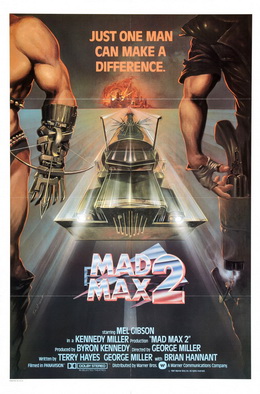
Mad Max 2 is a 1981 Australian post-apocalyptic dystopian action film directed by George Miller, who co-wrote it with Terry Hayes and Brian Hannant. It is the second installment in the Mad Max franchise. The film stars Mel Gibson reprising his role as "Mad Max" Rockatansky and follows a hardened man who helps a community of settlers to defend themselves against a roving band of marauders. Filming took place in locations around Broken Hill, in the Outback of New South Wales.
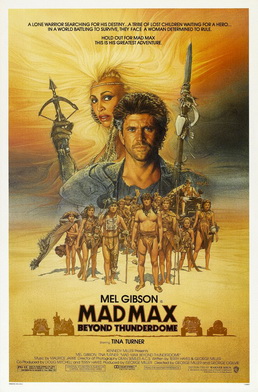
Mad Max Beyond Thunderdome, commonly known as Mad Max 3, is a 1985 Australian post-apocalyptic dystopian action film directed by George Miller and George Ogilvie and written by Terry Hayes and Miller. It is the third installment in the Mad Max franchise. The film stars Mel Gibson and Tina Turner, and follows a lone roving warrior who is exiled into the desert. It was Gibson's last performance as "Mad Max" Rockatansky thus far.
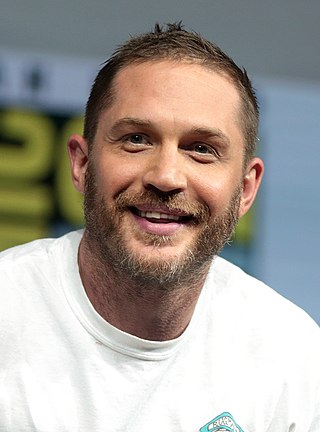
Edward Thomas Hardy is an English actor. After studying acting at the Drama Centre London, he made his film debut in Ridley Scott's Black Hawk Down (2001). He had supporting roles in Star Trek: Nemesis (2002) and RocknRolla (2008), and went on to star in Bronson (2008), Warrior (2011), Tinker Tailor Soldier Spy (2011), Lawless (2012), This Means War (2012), and Locke (2013). In 2015, he starred as "Mad" Max Rockatansky in Mad Max: Fury Road and both Kray twins in Legend, and was nominated for the Academy Award for Best Supporting Actor for his role in The Revenant. He has appeared in three Christopher Nolan films: Inception (2010), The Dark Knight Rises (2012) as Bane, and Dunkirk (2017). He has since starred as Eddie Brock/Venom in the film Venom and its 2021 sequel Venom: Let There Be Carnage.

Max Rockatansky is the title character and antihero protagonist of the Australian post-apocalyptic action film series Mad Max. Created by director George Miller and producer Byron Kennedy, the character was played by actor Mel Gibson in the first three films from 1979 to 1985, by Tom Hardy in the fourth film in 2015, and a cameo appearance by Jacob Tomuri in the prequel spin-off film Furiosa: A Mad Max Saga in 2024.
Cirio Hermoso Santiago was a Filipino film producer, director and writer. He used the screen names Cirio Santiago, Cirio H. Santiago, Leonardo Hermoso, and Leonard Hermes.
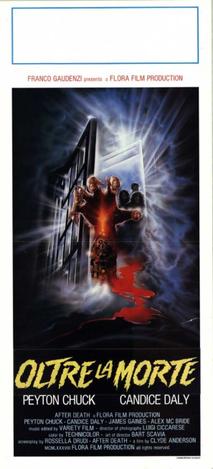
After Death is an Italian zombie film directed by Claudio Fragasso. The film is set on a remote island where a voodoo curse raises the dead from their graves to feast on the flesh of the living. When a boat of explorers—including a young girl who experienced the zombie uprising years earlier—makes an emergency docking on the island, the crew find that their only hope for survival is a protective idol given to the young girl by her mother years ago.
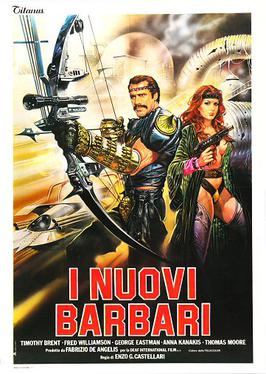
The New Barbarians is a 1983 Italian post-apocalyptic action film directed by Enzo G. Castellari, written by Castellari and Tito Carpi, and starring Giancarlo Prete and George Eastman. The plot takes place in 2019, following a nuclear holocaust, where two loners among the remains of the starving human race protect a group of pilgrims from a vicious gang bent on genocide.

Latitude Zero is a 1969 tokusatsu science fiction film directed by Ishirō Honda, with special effects by Eiji Tsuburaya. An international co-production of Japan and the United States, it stars Joseph Cotten, Cesar Romero, Akira Takarada, Masumi Okada, Richard Jaeckel, Patricia Medina, and Akihiko Hirata.

The Awful Dr. Orloff is a 1962 horror film written and directed by Jesús Franco. It stars Howard Vernon as the mad Dr. Orloff who wants to repair his disfigured daughter's face with skin grafts from other women with the aid of a slavish, blind henchman named Morpho. A co-production between Spain and France, filmed in Madrid, the film is considered to be the earliest Spanish horror film.
Ozploitation films are exploitation films – a category of low-budget horror, comedy, sexploitation and action films – made in Australia after the introduction of the R rating in 1971. The year also marked the beginnings of the Australian New Wave movement, and the Ozploitation style peaked within the same time frame.
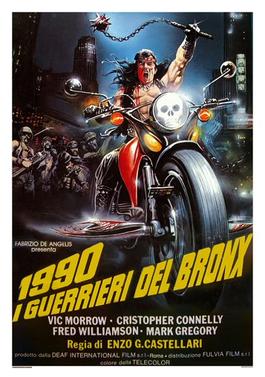
1990: The Bronx Warriors is a 1982 Italian action-science fiction film directed by Enzo G. Castellari.

Mad Max is an Australian media franchise created by George Miller and Byron Kennedy. It centers on a series of post-apocalyptic and dystopian action films. The franchise began in 1979 with Mad Max, and was followed by three sequels: Mad Max 2, Mad Max Beyond Thunderdome (1985) and Mad Max: Fury Road (2015); Miller directed or co-directed all four films. A spin-off, Furiosa: A Mad Max Saga, was released in 2024 and was also directed by Miller. Mel Gibson portrayed the title character Max Rockatansky in the first three films, while Tom Hardy portrayed the character in Mad Max: Fury Road.

Battletruck is a 1982 New Zealand post-apocalyptic science fiction action film co-written and directed by Harley Cokliss and starring Michael Beck, Annie McEnroe, James Wainwright, John Ratzenberger, and Bruno Lawrence.
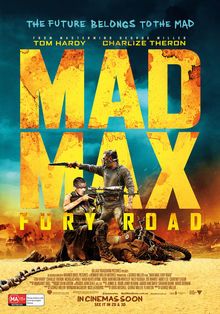
Mad Max: Fury Road is a 2015 Australian post-apocalyptic action film co-written, co-produced, and directed by George Miller. Miller collaborated with Brendan McCarthy and Nico Lathouris on the screenplay. The fourth installment in the Mad Max franchise, it was produced by Village Roadshow Pictures, RatPac-Dune Entertainment and Kennedy Miller Mitchell, and distributed by Roadshow Entertainment in Australia and by Warner Bros. Pictures internationally. The film stars Tom Hardy and Charlize Theron, with Nicholas Hoult, Hugh Keays-Byrne, Rosie Huntington-Whiteley, Riley Keough, Zoë Kravitz, Abbey Lee, and Courtney Eaton in supporting roles. Set in a post-apocalyptic desert wasteland where petrol and water are scarce commodities, Fury Road follows Max Rockatansky (Hardy), who joins forces with Imperator Furiosa (Theron) against warlord Immortan Joe (Keays-Byrne) and his army, leading to a lengthy road battle.
Joshua Helman is an Australian actor. He is best known for playing Slit in the action film Mad Max: Fury Road (2015), William Stryker in the superhero film X-Men: Days of Future Past (2014) and its sequel X-Men: Apocalypse (2016), and Scabrous Scrotus in the action film Furiosa: A Mad Max Saga (2024). He has also appeared in several television series, as well as the films Jack Reacher (2012), Monster Hunter (2020), and Thirteen Lives (2022).

Legend is a 2015 biographical crime thriller film written and directed by American director Brian Helgeland. It is adapted from John Pearson's book The Profession of Violence: The Rise and Fall of the Kray Twins, which deals with their career and the relationship that bound them together, and follows their gruesome career to life imprisonment in 1969.

Margaret Sixel is an Australian and South African film editor. She is best known for her work as editor on her husband George Miller's films, including Babe: Pig in the City (1998), Happy Feet (2006), and Mad Max: Fury Road (2015). For Fury Road, she won the Academy Award for Best Film Editing and the BAFTA Award for Best Editing.
2020 Texas Gladiators is a 1983 Italian science fiction action film co-directed by Joe D'Amato and George Eastman.
Dune Warriors is a 1991 American action sci-fi film co-produced and directed by Cirio H. Santiago. The film stars David Carradine.















